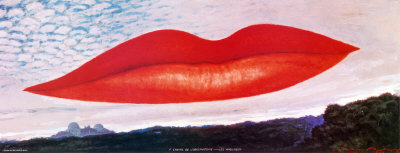What a glorious spate of weather, so beautiful that it is almost heartbreaking. After our unremarkable summer, every moment of these autumn days presents something to write home about. For these days, I believe, we have the fog to thank. October, according to meteorologist
Cliff Mass, is the foggiest month in Olympia. To celebrate, I am posting this fog blog--some photos, some science, some encouragement to trying to enjoy the lack of horizontal visibility that this type of stratus clouds brings to the landscape.

Last September, as my devoted readers may recall, I went swimming in the fog early one morning when Ward Lake was all but invisible. This year, the scene was the same (above), but I decided to photograph the fog moving over the city rather than swim in what was hanging over the lake. So I went up to Overlook Park in Tumwater with my camera. A water tower (below) marks the hilltop location of the park; this is the only time I have ever seen the color of the sky match the "camouflaging" paint color of the water tower. This is the view to the south.southeast.
And this (below) is the view to the north./northeast Just to the right of the large tree is the ghostly capitol dome. . The fog was rolling in from the northwest. The photo below was taken at 12:15 p.m
This one at 12: 39 p.m.
This one at 12: 48 p.m.
And this one at 1:03 p.m.
Fog is precipitation, formed of tiny water droplets, that takes the form of a stratus cloud--one that is in contact with the ground and that reduces horizontal visibility to less than 1/4 mile (1 km). If you went outside early in the morning this week, when the fog was the densest, you could see the individual droplets of the fog and watch them moving and swirling and falling.
There are many types of fog--ground fog, ice fog, frozen fog, freezing fog, fog smoke, sea fog, Arctic sea smoke, Bora fog, steam fog, valley fog, caribou fog (caused by warm exhalations of herds of caribou!), frontal fog, upslope fog, advection fog, and radiation fog. I could go on...
But let's talk about radiation fog. This is what we are experiencing in Olympia now. This type of fog forms on clear, cool nights (you have been seeing the stars and moon, right?) and usually after a sunny day during which the ground absorbs the solar heat. At night, that heat radiates from the ground into the air; the ground cools sharply after this loss. The warm air radiating from the ground comes in contact with the cooler ground. The water vapor in the air condenses and creates visible fog. A whole night of this and the fog builds into a thick layer that rises over the treetops.
Why does the fog hover over Ward Lake and other area water bodies? Two reasons. Our lakes are located on low ground and fog, which is heavier that the surrounding air, settles in low spots. And, because Ward Lake itself is radiating it's summer's worth of trapped heat into the surrounding air. I like to imagine the lake's fog as its slow release of summer into the crisp fall air. As long as there is fog on the lake, I know the water is still warmer than the air. In November, the water temperature is closer to the air temperature and the dense fogs are mostly gone.
Here is a wonderful illustration of radiation fog by my favorite American author-illustrator-meteorologist-painter, Eric Sloane. This is from his 1952
Weather Book (a 2005
Dover reprint). He's my hero.
And, finally, because I had heard than rain was in the forecast (putting an end to morning fog), I went out my favorite really low spot--the Nisqually National Wildlife Refuge. I was hoping to find myself wandering around for hours looking for my hand in front of my face, being attacked by Canada Geese I tripped over, or falling blindly off the dike and into the muck but, alas, I was too late for such Accidental Naturalist fun. I did get to enjoy the thick fog hovering over the still-warm waters of McAllister Creek (below) at low tide. The photographs show the long boardwalk (under construction) that will take visitors half mile out into the estuary.
Click here for info on the refuge and for news about the new boardwalk opening.
"It usually takes a rainbow, a thunderstorm, or some of of atmospheric antic to make us look upward and take note," writes Eric Sloane. "But if that gives us the habit, it is worth while. And I'll wager you will see a lot up there that you never dreamed of."
































